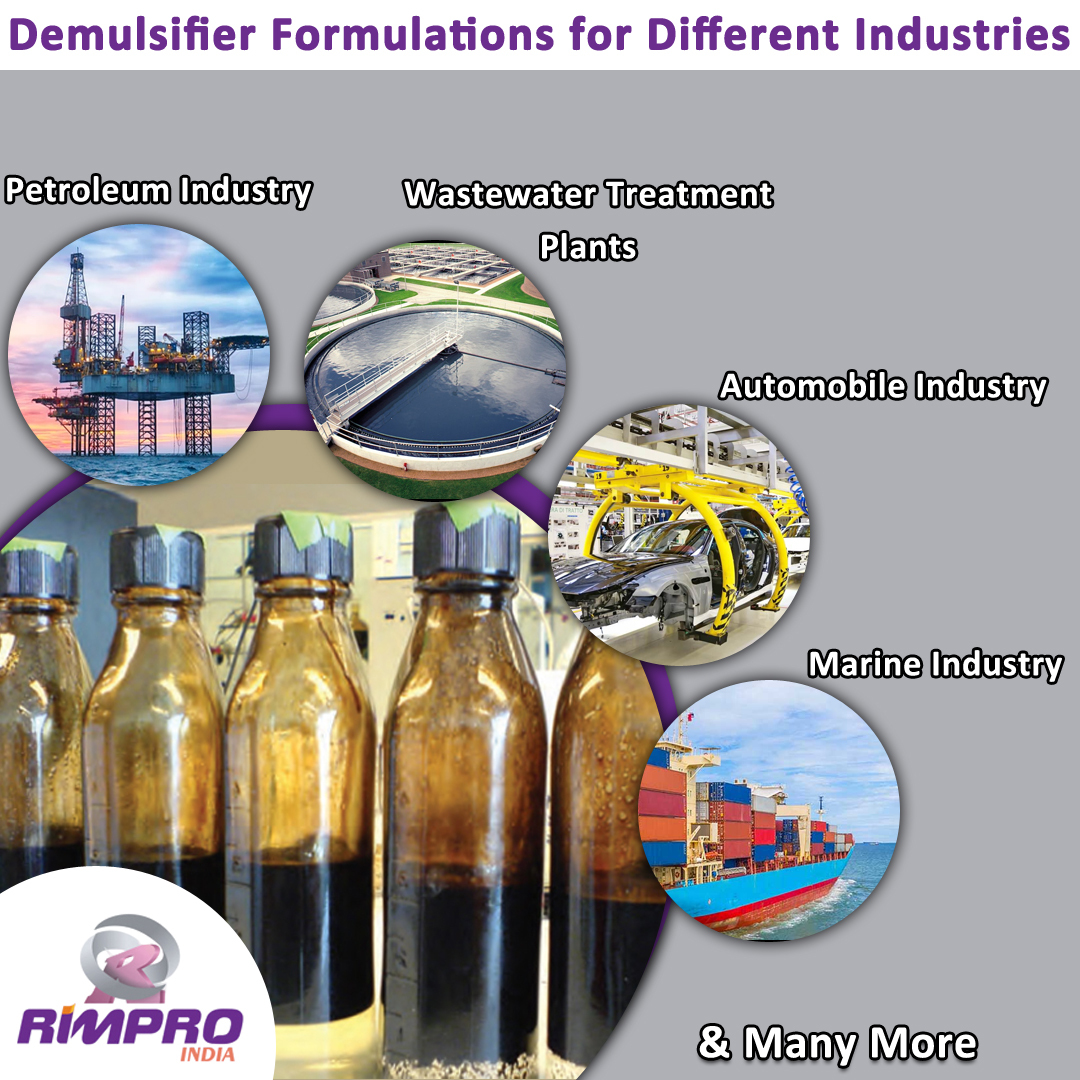 Menu
Menu
Optimization of Effective Demulsifier Formulation for Oil Spill Emulsions
Demulsifiers are specifically used chemicals that are used to separate emulsions, for example, water in oil. They are commonly used in the processing of oil, which is generally produced side by side with the majority of saline water. This water (and salt) must be removed from the crude before refining as Corrosion problems occur if the water and salt are not removed from the oil. The need for an excellent demulsifier process to treat emulsions in the crude oil and petroleum industry is very well clear and defined. Crude Oils have a high amount of natural surfactants which form a stable emulsion and this should be treated effectively because stable emulsions decrease the value of crude oil.
The optimization of an effective demulsifier as per a recent study has used a combination method of using ultrasound and a chemical demulsifier and respectively at different temperatures. The studies and research indicate that by using this demulsification for crude oil method, the dehydration rate increases with the rise in temperatures. This technique uses the agglomeration effect and the effect of ultrasonic waves to reduce the viscosity of oil which would make the water droplets in the crude oil come together and help in the water and oil separation which would be double-faced. There are other factors congenial for demulsification such as temperature the pH, concentration, and salinity of the content, and also the modifiers used. Also, the use of Light hydrocarbon diluent in varying proportions is used to enhance the emulsification of crude oil.

A Demulsifier formation is generally classified according to its primary function which is called the droppers or treaters. The main function of these compounds called droppers or the category of emulsion breakers is to accumulate water droplets and release any free water element. These kinds of demulsifiers also display de-salting properties and provide maximum efficiency in dealing with crude oils that are tough to handle. Treaters are such compounds that flocculate the microns which are spread in the crude oil. In treating some applications, a hybrid of these two could be effective.
An Oil-soluble demulsifier is a liquid formation and combination of surfactants and dispersants in a water base and soluble in chemicals like toluene, Xylene, Aromatic solvent, and crude oil for the demulsification of water in oil and oil in water. Being very capable of giving its delivery at room temperature it improves the quality of the fuel it is added to. The benefit of using this is that it uses a very less quantity. A 100% concentrated demulsifier is the chemical intermediate that reduces the interfacial tension between hydrocarbon and water. Similarly, the refineries demulsifier is also used in a petrochemical process plant. This Petroleum Demulsifier not only removes the water from the emulsion but is also helpful in the following ways-
- It reduces wastage
- Increases the profits in crude oil and petroleum refineries by the recovery of material
- Lower emissions
- Increases the efficiency of the plant
Demulsifiers can be segregated as oil-soluble demulsifiers and water-soluble demulsifiers. Upcoming is a green demulsifier that uses eco-friendly chemicals and is expected to be a major head-turner owing to the increase in demand for crude oil and Petroleum product supply. Demulsifier manufacturers are spread in fragments around the globe and due to the market surge, it is bound to take a major leap in the decades to come.
Ways to show more control in the demulsification formation process
- Certain chemicals are injected during oil production. Laboratory tests and following set standards should be done to avoid tight emulsions and corrosion.
- Avoiding Crude oil blends-Any a blend is to be avoided which results in the precipitation of organic or inorganic solids.
- Increasing the apt temperature of the emulsion breaking process.
